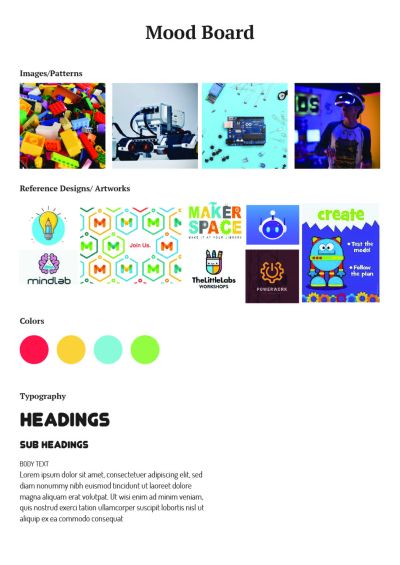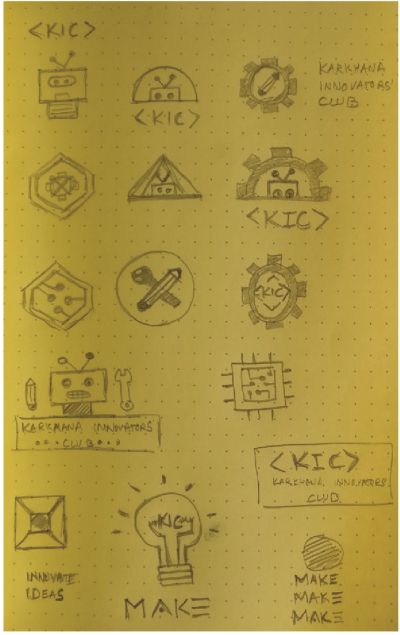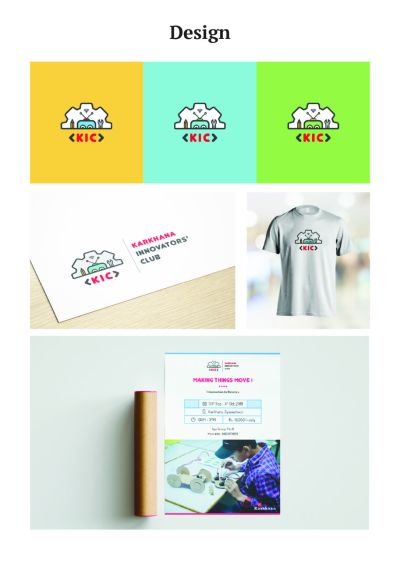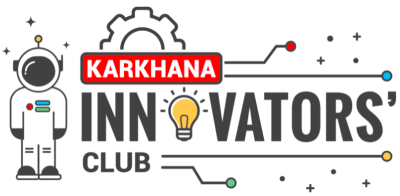A Graphic Designer’s Experience
Let’s start with your content creation process. Do you have a clearly defined process you follow while creating?

If the deadline is close, I don’t get enough time to sketch my ideas. In such cases I start working directly on the design software. But when I have time, I like to put together the ideas on paper and sketch a draft.
There’s one interesting thing that happens while working on designs. Sometimes, despite brainstorming, I don’t get good ideas to build on. Then, when the deadline gets close, I suddenly get ideas about the design while engaged in some other activities.
What is the difference between directly starting on a project and creating a paper draft before jumping into the real work?
While working on a paper sketch, it’s easier to visualize ideas compared to working directly on software like Adobe illustrator. There is no need to be precise while making these initial drafts. You can quickly try two or three iterations. Then you can pick the one that you want to convert into a digital work. It’s not exactly a sketch or drawing that you do in this stage. It’s more like you position different elements of the design and see how it looks. I use sketches while designing logos for brands. Sketching becomes important for me during this part because I can test many options. Like I can use letters, icons for the logo and I can quickly sketch and visualize them.

Sometimes you do get an image of what a design should look like, without sketching it. In such cases you can directly jump to software. There’s no clear idea of color combination while working on paper so while working on a digital form, you get to decide on the color scheme and fonts. It usually happens while working on posters. I get some ideas based on the content of the poster, like the position of title, images, text and so on.
If you directly start working on a software, it can lead to a waste of time and effort in case you don’t like the outcome and need to discard it. It takes up more time so while working directly on software I do upto two iterations. While working on paper I can do a greater number of iterations. For example, out of five paper drafts, I can try the best two in digital form.
How do you discuss when you are ideating in a group?
I usually don’t work in groups with other designers, as I am a freelancer. I do, however, collaborate with clients to ideate on their project in order to understand their point of view. The clients usually have their own image of what the design should look like. But the most important thing here is not how I, or the clients see the design, but how the target audience sees it. So it’s necessary to think from the point of view of the target audience as well. I try to combine ideas from everyone involved and use them in the final output. Because I am creating the design for the target audience, and not for the clients or myself, it’s very important to understand the target audience.
Adding to the group work, feedback is another important thing. When a designer gives feedback on your work, it is mainly focused on the design elements. Such as, whether the colors are going well together or not, the combination of font looks good or not, any issues with the alignment etc. these feedback make your work easier.
How do you see digital content creation? Any metaphor or analogy that you use to describe it?
Design is a medium for visual communication. It’s a problem solving technique. Whether it is digital or print, the design should be able to convey the message, information, or emotions that it is intended for. A rule of thumb I use to evaluate designs – If I have to explain my design to my target audience for them to be able to understand it, then the design simply didn’t work.
I had read that you draw inspiration from the work of other designers. Where can other content creators get inspiration?
There are a few designers I look up to as inspirations. One of them had mentored me during my early days. There is also a design sharing site called Behance where designers can share their work in the form of portfolios. It’s a good place to study designs. Initially I used to draw inspirations from designs posted on Pinterest. Nowadays I don’t use Pinterest as much as I used to because I have discovered sites specializing in design. Pinterest isn’t design specific as it has content on everything. Dribbble, another site, has great resources for studying color schemes and combinations. Apart from these, I sometimes search google to view work that isn’t available in the sites I mentioned above.
Do you have any research process? If yes, what are the things you keep in mind while doing so?
If I am working on a project, let’s say karkhana’s books on digital citizenship, I look up works already done under that topic and study the typography, colors, illustrations used. I collect a lot of references related to the project and study them. I note down the things I like and dislike. Then I think about the changes I would make or the additions I would make. Combining the ideas helps me shape a good output.
Have your contents been trolled? Any unpleasant experience as a content creator?
My contents haven’t been trolled yet but there has been one unpleasant incident in relation to my content. I have seen one of my illustrations being used without my permission. Initially I got annoyed to see someone using my work without my permission, without giving any credit to me. But in a way I felt happy about it too because it meant that the person had liked it enough to use it. It made me feel good about my own work. But of course, I would have been happier if the person would have asked for my permission. I would have allowed the person to make a free use of it.
There has been another unpleasant incident too. I had accepted a project to design a logo for a company. I had taken it at the request of a friend whose friend was the client. And because it had come through a friend, I didn’t find it necessary to do any agreement or contract. I rather relied on trust. The client had told me that her regular designer wasn’t accessible and they needed the logo on a short notice. I designed three logos and sent them to her. She liked one of them and provided the feedback. I was working on the feedback accordingly. Meanwhile, the person called and told me that her regular designer was back and had designed the logo for her, and so she wanted me to discard the work on the logo and work on some brochures instead. I was annoyed as well as baffled at the failure of the person to acknowledge the effort and time I had already put into the logo design.
Have there been instances in which you haven’t enjoyed being a graphic designer?
It usually happens when you are compelled to accept projects that you don’t enjoy working on. For example, I don’t enjoy doing fancy, garish advertisement designs. If a really close friend of mine asks me to do such a project, I’ll accept such a commission despite not wanting to do it just for the sake of our friendship. But such work doesn’t get me quite comfortable. Also, doing fancy designs isn’t my cup of tea. I prefer to do clean, simple, elegant designs. Maybe this is something I need to work on but I don’t find it interesting to design flamboyant ads. And when I have to take such projects, the process is inevitably hard to enjoy.
Sometimes, if the project I am doing isn’t something that interests me, I am forced to question if I’m doing it solely for money. It happens mostly while working on a project I don’t want to do at all. Such projects don’t provide me with the creative satisfaction and accomplishment I like to get out of my work. During such times, I have a down feeling.
What are your favourite things about graphic designing?
It feels good to be appreciated for your work; by the client as well as the audience. I like seeing my designs get printed on paper, seeing them take a physical form. It’s a rewarding experience.


What advice would you give to people who are beginners in graphic design?
If you are interested in graphic designing, it helps to have a mentor figure. I don’t have an academic background in design. I was a student of IT but I soon felt that coding wasn’t my cup of tea. I felt more drawn towards designing. I started my career as a designer with an Internship. I had two senior designers there who mentored me and I learned a lot from them. I learnt that designing is more than just using tools like photoshop. There I discovered that things like design principles exist. Before that, I used to think that designing meant creating something fancy but with their help I understood that design is more about conveying a message, a kind of problem solving. I also learnt to use many digital tools I didn’t know back then. So the most important thing for beginners is to look for a mentor, or even friends who are skilled in design. Nowadays the online platforms have made it easier for people to connect with other designers. There are online communities of designers such as facebook groups. Even youtube has plenty of videos on design. You can get a lot of knowledge from such resources.
Going to a design school helps a lot. Colleges like KU school of Arts, Lalit Arts Campus, Srijana School of Fine Arts have courses like Bachelors in Fine Arts. While being a self taught designer is possible, joining courses like these definitely makes things easier. I was not aware of such courses during my undergraduate days. This is another thing I would recommend to people who have discovered their love for design early in life.
Most people don’t see downloading and using digital copies work such as ebooks or photos as property theft, but the same people would consider it wrong to shoplift physical copies of books or printed posters. What might be the reason behind this attitude?
People don’t seem to give much importance to intellectual work. I have seen this in Nepal in context to photographs. People use photos in theri work without any permission or credits. I feel that it’s because people haven’t understood the importance of digital content creation. People don;t see that we put a lot of effort behind a work that they can so easily copy and paste. It’s because they don’t see the perspective of a creator. For example, our work is more digital. We don;t make physical copies. Digitization has made it so easy for people to share and copy digital files that people take the digital creations for granted.
Even when we make designs, most clients don’t see the time and effort we put into creating it. A good design looks simple, elegant and most clients think that anyone can make it. A lot of our time goes into work that isn’t directly visible, such as ideation, research, iterations. Clients sometimes behave as if the work presented to them is so simple that it’s not worth the amount they are paying for it. Some clients are understanding and they get it but some don’t and it’s difficult to make them understand.
People might be thinking that the amount of money they are paying should be visible in the design in the form of illustrations, colors, text etc. If we create simple designs, maybe they don’t understand that it’s quite a complex process to come up with a simple, elegant design.
In recent times, we can see that digital contents can impact the opinions and mentality of viewers. What responsibility do you think content creators bear in respect to their audience?
Most content creators create misleading contents to increase following. It’s the responsibility of content creators to provide quality content to their audience. Sometimes, people unknowingly create contents based on their incorrect opinion, or misinformation and it goes viral, spreading the misinformation along with it. This can have grave consequences. Thus it’s necessary for content creators to check their sources before they build on it.
You have stated that constructive feedback helps to improve. But during your beginner phase, was it difficult for you to accept such feedback?
Yes it was. You are vulnerable to self-doubt as a beginner and you tend to take constructive feedback as personal criticism. You begin questioning your work and your ability to create. And sometimes while seeing amazing work of other creators, you tend to develop an inferiority complex. The urge to compare and stand out is strong during those days. It’s quite a common thing you see in inexperienced people from every field.
How did you grow out of those challenges?
It’s a part of being human. The initial feelings of self-doubt are later helped by experience. Getting more experience teaches you that you grow along with your work. You also learn that you have good and bad days as a creator and the tendency to judge yourself based on your work or even the opinion of others about your work gets reduced.